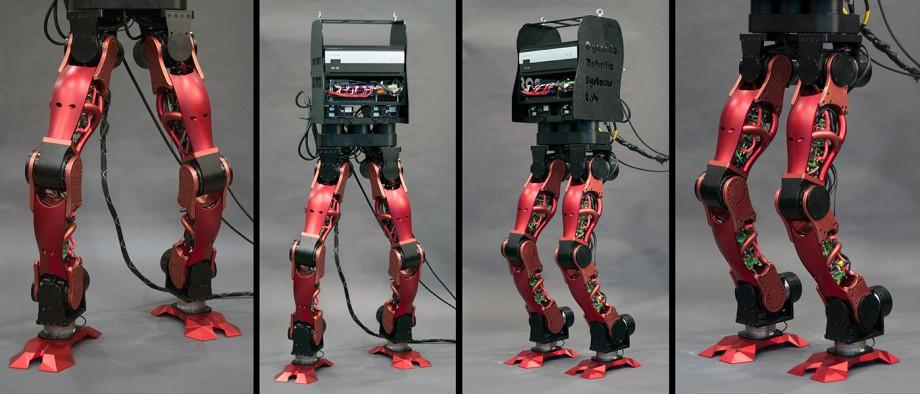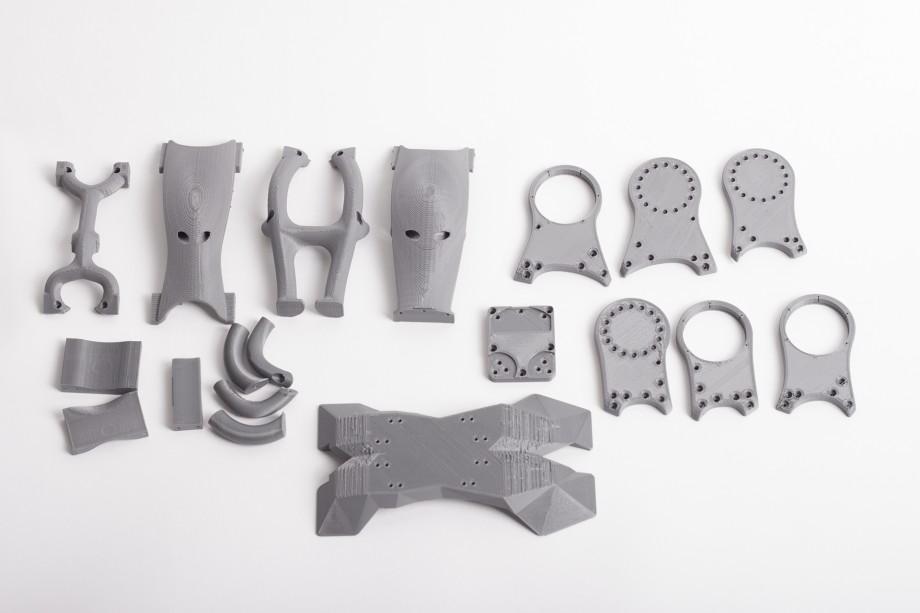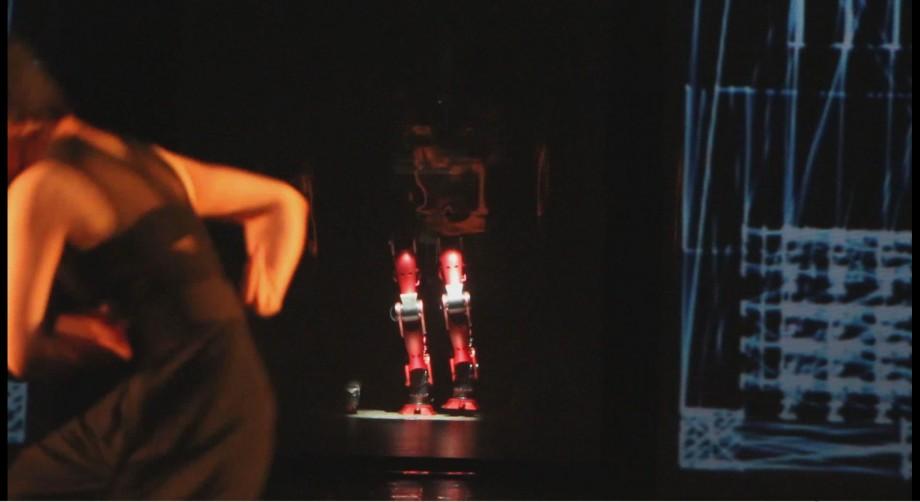He’s upright. He’s functional. He even dances. This is the humanoid robot design, also known as DyRoS, produced through CNC machining after using the invaluable process of 3D design and 3D printing to form a visualization of the structure, as well as allow for testing. A culmination of an ongoing project by The Digital Human Research Center, funded by the Advanced Institutes of Convergence Technology, DyRoS was presented last week at Humanoids 2014, an international conference on humanoid robots.
DyRoS is not only a project in engineering but an exercise in aesthetics, as its creators hope to see an integration of art and engineering meld together — even exemplifying this through making the robot part of a contemporary Korean dance performance. Aesthetics is one of the first topics the creators of the robot discuss in their paper Aesthetic Design and Development of Humanoid Legged Robot, positing that the way the robot — or any product, obviously — looks has everything to do with how the human perceives its worth and functionality.
 We apparently tend to judge a humanoid robot by his locomotion and how well we think he ‘walks.’ Also of interest is that the designers point out that aesthetics are more important than the robot appearing human. While he doesn’t need to appear to look exactly like a human, we tend to be more receptive to the robot and accepting of his capabilities if he represents a general outline and size representative of the human body.
We apparently tend to judge a humanoid robot by his locomotion and how well we think he ‘walks.’ Also of interest is that the designers point out that aesthetics are more important than the robot appearing human. While he doesn’t need to appear to look exactly like a human, we tend to be more receptive to the robot and accepting of his capabilities if he represents a general outline and size representative of the human body.
DyRoS was created in South Korea, and the robot’s size proportions are approximate to that of the average South Korean female. The ‘legs’ do imitate human anatomy in a rudimentary way, while still making exceptions for the placement of the motors.
The Digital Human Research Center led the aesthetic design and manufacturing, while the Dynamic Robotic Systems Lab led the electronic specifications and mechanical manufacturing. DyRoS began as a simple sketch which after multiple iterations was transformed into a 3D design, culminating in a 3D printed model which was assembled for testing. Colors of the robot were visualized through renderings in 3D studio Max, with the main parts anodized in red and the basic parts anodized in black.
The structural design of DyRoS is deceptively simple in that assembly of the frame is completed with a minimal amount of bolts, which allow easy access to the electronics. The computer is housed in the ‘torso’ which will eventually, with future design and development, transform into an entire upper body for the robot which currently runs on an Intel I7-630m processor and 4Gbyte DDR3 RAM. The computer also runs roboticsLab as realtime control software.
DHRC has made the design for DyRoS open source, and they look forward to seeing what variety of sizes as well as further affordability other users can lend to the design. Have you been involved in 3D printing to create or test any robotics? Tell us about it in the DyRoS forum at 3DPB.com.
Subscribe to Our Email Newsletter
Stay up-to-date on all the latest news from the 3D printing industry and receive information and offers from third party vendors.
You May Also Like
UpNano Launches 2PP 3D Printing Service with New NanoPro VT Printer
UpNano, an Austrian company specializing in two-photon polymerization (2PP) additive manufacturing (AM), has launched a service bureau that will offer high-volume output of microscale parts. The new service, NanoPro, will...
Materialise Updates Magics and Partners with BLT at Formnext 2024
At this year’s Formnext, 3D printing software and services pioneer Materialise, unveiled a series of software updates designed to enhance customization capabilities in 3D printing for its users. The announcement...
HP’s New Materials, Tools, and Collaborations to Drive 3D Printing Forward at Formnext 2024
At Formnext 2024, HP unveiled several key developments aimed at advancing additive manufacturing (AM), with new materials, workflow optimization tools, and expanded metal printing capabilities. These announcements reinforce HP’s strategy...
Farsoon at Formnext: What’s New in 3D Printing for 2024
With Formnext 2024 underway in Frankfurt, Farsoon Technologies (SHA: 688433) is showcasing a series of developments unveiled in the lead-up to the event. From advancing food-safe 3D printing for the...







































